Tourism’s growth brings economic benefits, but Why Is Tourism Bad For The Environment? SIXT.VN explores the negative impacts of global travel on our planet and offers practical solutions for sustainable tourism in Vietnam and beyond. Discover how responsible tourism can safeguard ecosystems and minimize environmental footprint, including promoting eco-friendly transportation options and supporting local communities.
1. Tourism, Environment, And Climate Change: An Overview
Tourism, as one of the largest and fastest-growing industries worldwide, significantly impacts the environment. International tourism is experiencing a robust recovery, with approximately 1.4 billion arrivals in 2024, marking an 11% increase from 2023. The United Nations World Tourism Organization (UNWTO) projects continued growth of 3% to 5% in both domestic and international tourism for 2025, placing additional strain on popular tourist destinations.
While tourism can foster conservation and sustainable development, it also leads to pollution, habitat degradation, and increased emissions. Addressing these challenges requires immediate and thoughtful action to balance economic benefits with environmental preservation.
1.1. Tourism Can Drive Conservation
Responsible tourism can be a powerful tool for conservation. It generates revenue and raises awareness, which helps to fund conservation initiatives, support local communities, and incentivize the preservation of natural and cultural resources. Often, the economic value of a destination’s natural beauty or biodiversity is what justifies its protection.
The Great Barrier Reef, for example, contributes over AUD $6 billion annually to the Australian economy and supports approximately 64,000 jobs. These economic benefits provide a strong rationale for reef conservation. Visitor fees from reef tours are reinvested in initiatives like coral restoration, reef health monitoring, and controlling crown-of-thorns starfish, a significant threat to coral.
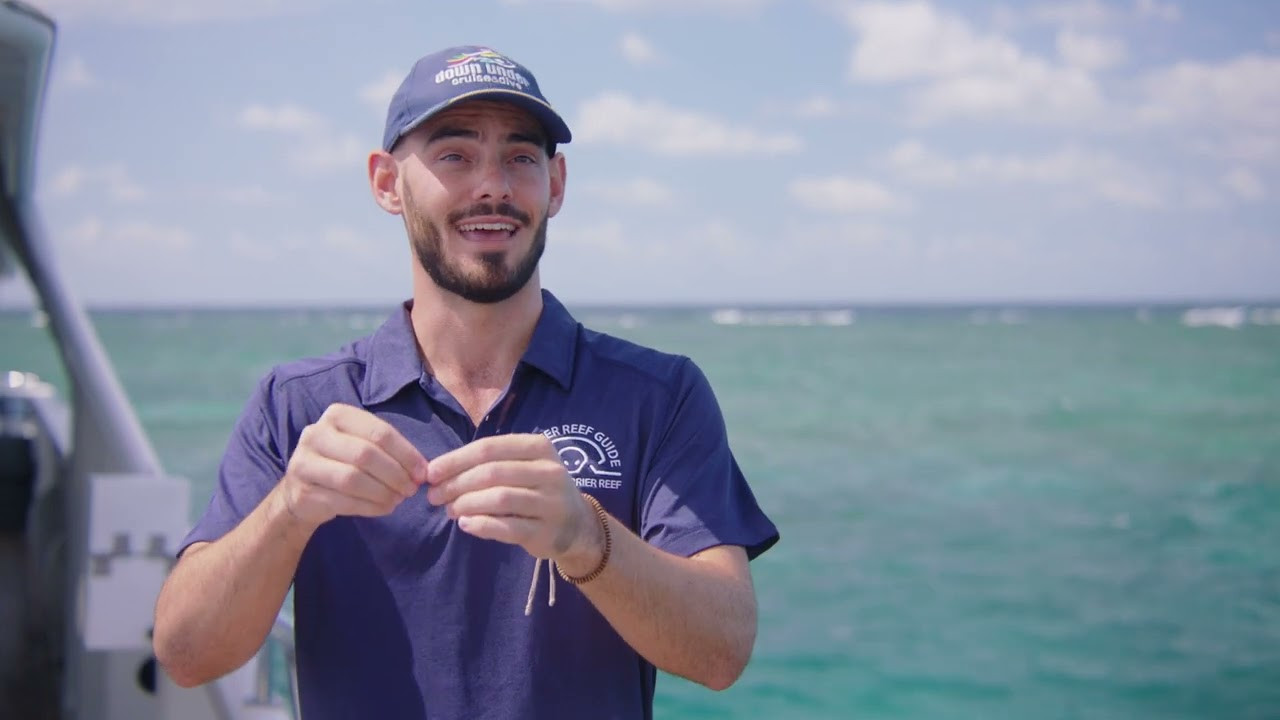 Great Barrier Reef
Great Barrier Reef
Countries like Costa Rica, Tibet, and Bhutan have based their tourism models on conservation. Over 25% of Costa Rica’s land is protected, often funded by eco-tourism revenues. Bhutan limits visitor numbers and charges a daily fee that directly supports environmental protection and cultural preservation.
1.2. But Mass Tourism Strains Ecosystems
While tourism can revitalize a destination, excessive tourism can degrade it. In cities and natural sites globally, mass tourism pressures environments, infrastructure, and local residents.
Venice, with its narrow canals and historic streets, now hosts more tourists than residents. To manage this, the city introduced a daily entry fee in 2025, charging €5 to €10 based on booking time. Tour group sizes are limited to encourage responsible tourism.
Rome is considering charges for access to landmarks like the Trevi Fountain. New Zealand has increased visitor levies to protect its natural landscapes. These measures highlight the need for boundaries in tourism to prevent the loss of the very attractions that draw visitors.
 Crowded Venice Canal
Crowded Venice Canal
1.3. Tourism Emissions Are Rising Rapidly
Tourism significantly contributes to greenhouse gas emissions, making it a growing environmental concern. A 2024 study led by the University of Queensland, published in Nature Communications, found that emissions from tourism increased by 3.5% annually between 2009 and 2019, more than double the global emissions growth rate. By 2019, the sector accounted for 8.8% of total global emissions, with aviation responsible for about half of that.
Dr. Ya-Yen Sun, the lead researcher, cautioned that without immediate interventions, emissions could increase by 3% to 4% annually, doubling every 20 years. The study identified that 20 countries are responsible for 75% of tourism-related emissions, with the U.S., China, and India leading due to their high inbound and outbound tourism volumes.
 Tourism Emissions
Tourism Emissions
1.4. Climate Change Threatens The Future Of Tourism
Tourism not only contributes to climate change but is also affected by it. Rising sea levels, extreme weather events, and ecosystem collapse increasingly threaten tourist destinations worldwide.
Island nations like the Maldives, Tuvalu, and the Seychelles face potential submersion due to rising sea levels. The Great Barrier Reef in Australia has suffered repeated bleaching due to warming oceans, endangering this iconic natural wonder. Ski resorts from the Alps to the Rockies are experiencing shorter seasons and unreliable snowfall, impacting winter tourism.
 Climate Change Impact on Tourism
Climate Change Impact on Tourism
2. How Does Tourism Harm The Environment?
Tourism can have significant adverse effects on the environment. While it can support local economies and conservation, unchecked tourism can degrade the very environments it depends on.
2.1. Degradation Of Natural Environments
One of the most significant negative impacts of tourism is the degradation of natural environments. Tourist hotspots, particularly those in ecologically sensitive areas, frequently undergo habitat destruction due to infrastructure development. The construction of hotels, resorts, roads, and other tourism facilities can result in deforestation, alteration of land, depletion of natural resources, and disruption to local ecosystems. In places like Bali, once-idyllic beaches are now flanked by sprawling resorts, affecting marine life and leading to significant erosion of the shoreline.
2.2. Waste Management Challenges
Waste management poses another challenge. In many popular destinations, the influx of tourists surpasses the local waste management capacity, leading to pollution. For example, Mount Everest, often referred to as the “world’s highest garbage dump,” is littered with oxygen cylinders, plastic waste, and even camping equipment discarded by climbers. Such uncontrolled waste not only spoils the landscape but can also contaminate local water sources, impacting both human and wildlife populations.
2.3. Water Scarcity
Water scarcity is an often-overlooked repercussion of tourism. Many tourist-heavy regions face immense pressure on their freshwater resources, either due to overconsumption by hotels and resorts or by diverting them for recreational activities. Golf courses, particularly in arid regions, consume vast amounts of water, putting local communities at risk. Islands like Santorini in Greece have seen their freshwater reserves deplete significantly, forcing them to import water or rely on desalination.
2.4. Noise And Light Pollution
Noise and light pollution are additional concerns in areas with heavy tourist traffic. The constant hum of boats, vehicles, and human activity can disturb wildlife (including vulnerable and endangered species), affecting their natural behaviors and breeding patterns. Sea turtles, for example, which rely on the moonlight to find their way from the beach to the ocean, can be disoriented by the bright lights from beachfront properties, making their survival even more challenging.
2.5. Introduction Of Non-Native Species
The introduction of non-native species, whether unintentionally through transported goods or deliberately for tourist attractions, can upset the ecological balance of an area. In the Galápagos Islands, introduced species like goats and rats have wreaked havoc on the local flora and fauna, prompting extensive (and expensive) eradication programs.
3. How Does Tourism Contribute To Climate Change?
Tourism significantly contributes to climate change through various channels.
3.1. Air Travel Emissions
Aviation is the largest contributor to tourism emissions, accounting for 52% of the sector’s direct carbon footprint. Efforts to promote sustainable fuels are often hindered by weak regulations and industry lobbying.
3.2. Increased Energy Consumption
High-end tourist accommodations often require substantial energy for heating, cooling, and lighting. Hotels and resorts account for 34% of tourism’s indirect CO₂ emissions.
3.3. Transport Within Destinations
Local transport, including rental cars, buses, and boats, significantly increases a tourist’s carbon footprint. These emissions are often underestimated but can be substantial.
3.4. Cruise Ship Emissions
Cruise ships consume large amounts of fossil fuels and release both CO₂ and other pollutants. The size of many cruise ships has doubled since 2000, exacerbating their environmental impact.
3.5. Over-Reliance On Fossil Fuels
Many tourist destinations still depend on coal, oil, and gas for power. Without transitioning to renewable energy sources, tourism’s emissions will continue to rise.
3.6. Food Production & Consumption
To meet visitor expectations, many destinations import large quantities of food, often non-local or out of season, which increases transport-related emissions.
3.7. Land Use & Carbon Loss
Tourism development frequently leads to deforestation and soil erosion, which removes crucial carbon sinks and contributes to long-term emissions.
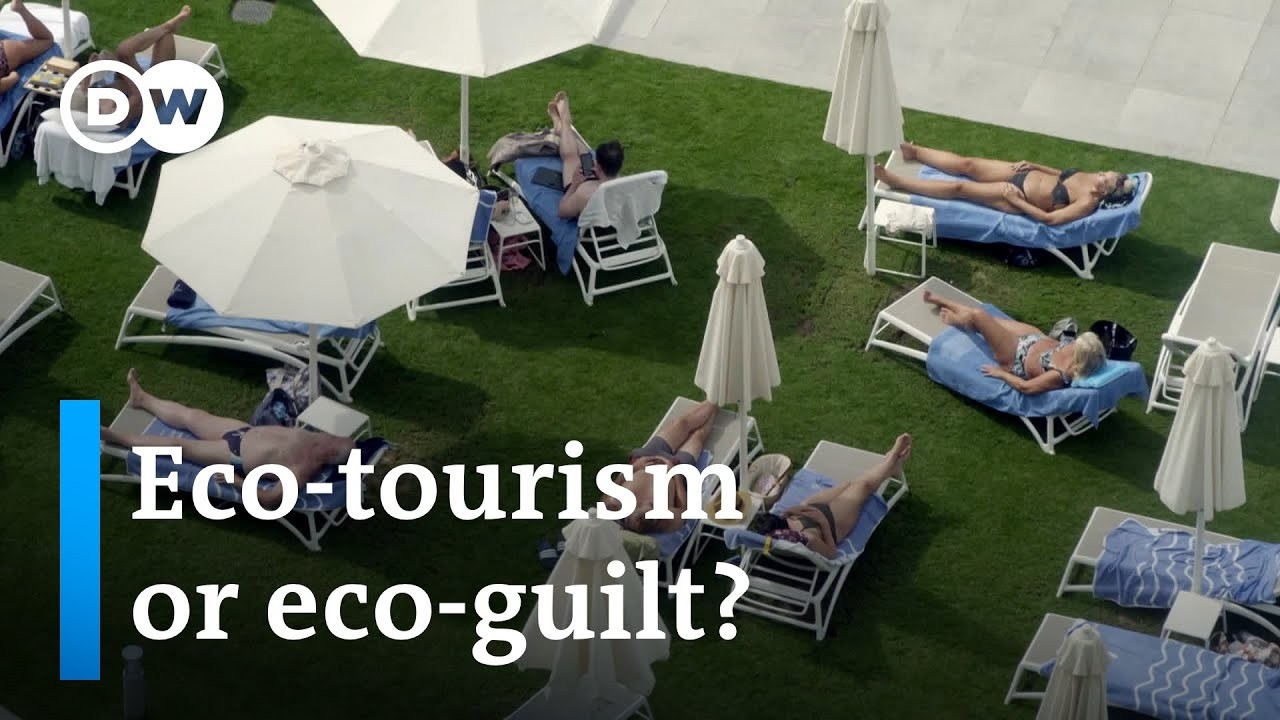 Tourism Impact on Climate Change
Tourism Impact on Climate Change
4. Can Tourism Be A Force For Good?
Despite its environmental impact, tourism can also be a force for good. When managed responsibly, it can provide economic benefits, fund conservation efforts, empower local communities, and protect natural and cultural heritage.
4.1. A Reason To Protect, Not Exploit
In countries with limited industrial capacity, tourism offers a viable economic alternative to environmentally damaging industries like mining or logging. Nature becomes more valuable when preserved rather than destroyed.
Kenya’s national parks, home to lions, elephants, rhinos, and other wildlife, are central to its economy. Entrance fees, safari tours, and lodge stays generate revenue that supports wildlife conservation and local livelihoods. The presence of tourists also helps protect these animals from poaching, as their economic value alive exceeds their value as trophies or trade items.
4.2. Community Benefits And Local Jobs
Tourism generates jobs in remote or rural areas where other opportunities may be scarce. These jobs, ranging from guiding and hospitality to transport and crafts, often depend on healthy ecosystems and cultural integrity, thus incentivizing their preservation. Community-based tourism models, where locals are directly involved and benefit from tourism operations, are proving effective in Nepal, Namibia, and parts of Latin America.
4.3. A Tool For Awareness
Tourism can also raise environmental awareness. Visiting the Arctic, the Amazon, or a coral reef can provide travelers with firsthand knowledge of what is at stake and motivate them to take action. Personal experiences often lead to donations, advocacy, and policy changes.
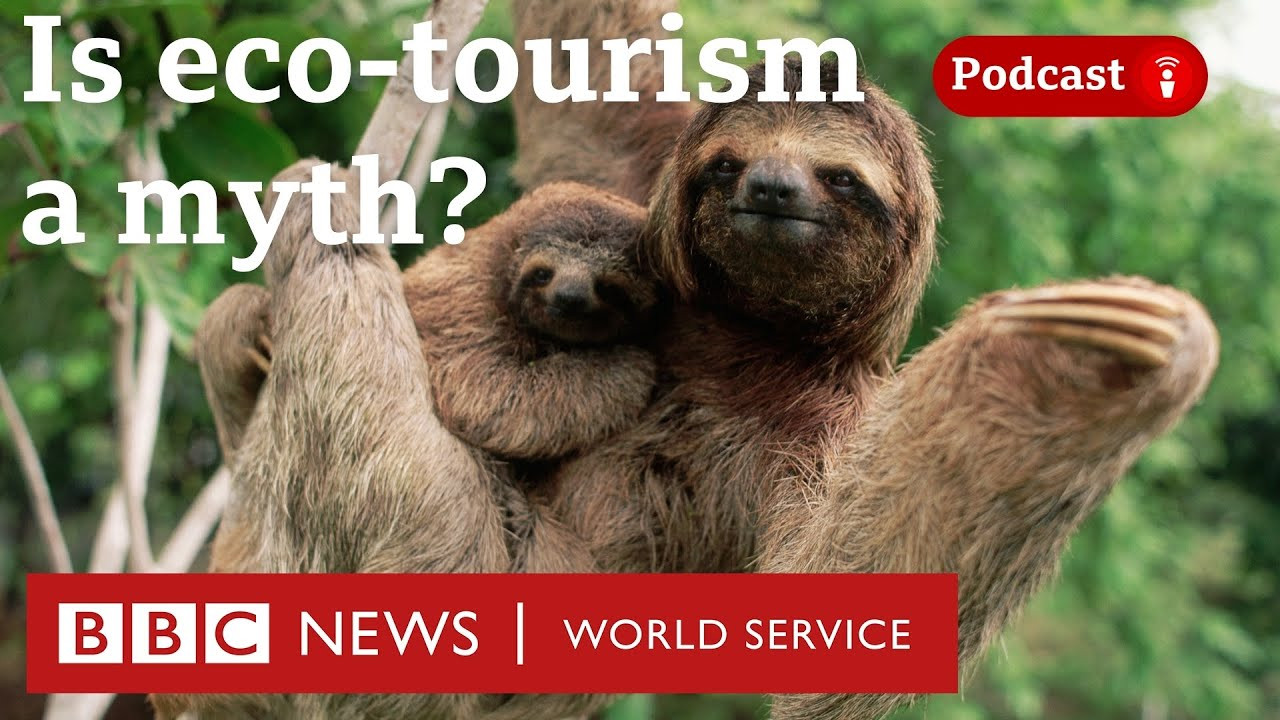 Sustainable Tourism
Sustainable Tourism
5. The Paradox Of Climate-Vulnerable Destinations
Many climate-vulnerable regions heavily rely on tourism. Small island nations, coastal towns, and remote landscapes often lack alternative income sources. Yet, they are the first to experience the consequences of a warming planet.
The Maldives, Fiji, the Seychelles, and the Caribbean depend heavily on air travel for economic survival but are on the front lines of rising sea levels and stronger storms. This paradox highlights the challenge of sustaining economies without exacerbating the climate crisis.
Solutions include:
- Investing in resilient infrastructure, such as elevated buildings and renewable-powered resorts.
- Diversifying economies to reduce reliance on tourism.
- Rethinking high-value, low-impact travel with fewer visitors staying longer, spending more, and causing less harm.
6. The Future Of Tourism
The future of tourism faces both challenges and opportunities. As global travel expands, addressing its environmental impact becomes increasingly urgent.
6.1. Eco-Tourism Initiatives
Eco-tourism is an emerging trend that focuses on responsible travel to natural areas. Eco-tourism aims to conserve the environment, support the well-being of local people, and encourage learning and education. This form of tourism promotes reducing negative effects on the environment while increasing economic advantages for local communities. Destinations such as Costa Rica have capitalized on eco-tourism, where tourists can revel in the natural beauty while assisting in safeguarding efforts.
6.2. Green Infrastructure
Green infrastructure and investing in renewable energy sources is crucial for promoting sustainability in the tourism sector. Many tourist companies are adopting sustainable practices. From small eco-lodges to large hotel chains, efforts include utilizing solar and wind power, cutting down on water usage, and implementing strategies to minimize waste. In addition, the rise of green building certifications such as LEED, exhibits the growing significance of sustainability in the hospitality sector.
6.3. Carbon Offsetting Programs
Carbon offsetting programs offer tourists a means to reduce their effects on the environment by lowering air travel emissions. Travel agencies and airlines are providing carbon offset options, allowing customers to put their money into ecological ventures that aim to decrease greenhouse gasses. The promotion of eco-friendly transit options such as cycling and high-speed trains, as well as electric vehicles, is gaining traction as a way to reduce tourism travel’s environmental effects. Many people are choosing train travel for medium and short-distance trips in Europe, which lowers reliance on flights.
6.4. Community-Based Tourism (CBT)
Community-based tourism emphasizes on empowering regional communities through direct integration in the tourism sector. The approach enables equal dissemination of financial advantages and helps maintain cultural diversity and environmental integrity. CBT cultivates a greater bond between regional cultures and tourists, improving travel experiences while endorsing sustainable development and conservation. Bhutan regulates tourism heavily and requires visitors to pay a sustainable development fee, which contributes to protecting the country’s cultural and environmental assets.
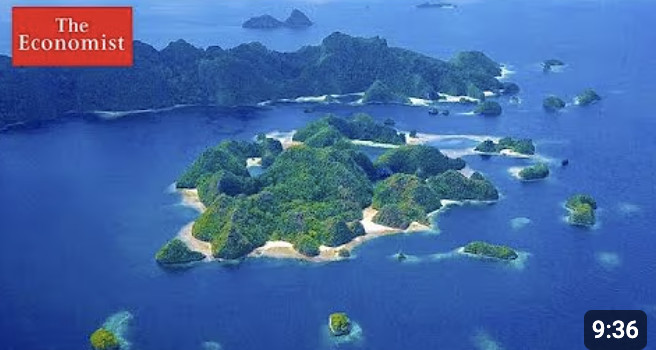 Sustainable Tourism Development
Sustainable Tourism Development
7. How Can You Reduce Your Environmental Impact When Traveling?
Individuals can take several actionable steps to reduce their environmental impact while traveling.
| Action | Description |
|---|---|
| Choose Eco-Friendly Accommodations | Opt for hotels and accommodations with strong environmental practices, such as energy efficiency, waste reduction, and water conservation. Look for certifications like LEED or Green Key. |
| Travel Light | Pack only what you need. Lighter luggage means less fuel consumption during transportation, which helps reduce carbon emissions. |
| Offset Your Carbon Emissions | Use carbon offset programs to compensate for the emissions generated by your flights or other modes of transportation. Invest in projects that reduce or remove carbon from the atmosphere. |
| Use Public Transport | Whenever possible, use public transport, walk, or cycle instead of renting a car or taking taxis. This reduces your carbon footprint and is often a more immersive way to experience a destination. |
| Support Local Businesses | Spend your money at locally-owned businesses, such as restaurants, shops, and tour operators. This helps to support the local economy and reduce the environmental impact of transporting goods over long distances. |
| Reduce Waste | Carry a reusable water bottle, shopping bag, and utensils to minimize single-use plastic waste. Avoid products with excessive packaging. |
| Respect Local Wildlife | Avoid activities that exploit animals, such as riding elephants or visiting poorly managed zoos. Support ethical wildlife tours and sanctuaries that prioritize animal welfare. |
| Be Energy Conscious | Turn off lights, air conditioning, and electronics when not in use. Consider taking shorter showers and reusing towels to conserve water and energy. |
| Avoid Over-Tourism Hotspots | Explore less popular destinations to avoid contributing to over-tourism. This helps reduce the environmental strain on popular sites and offers a more unique travel experience. |
| Educate Yourself and Others | Learn about the environmental impact of your travel choices and share this knowledge with others. By raising awareness, you can help spread the importance of sustainable travel. |
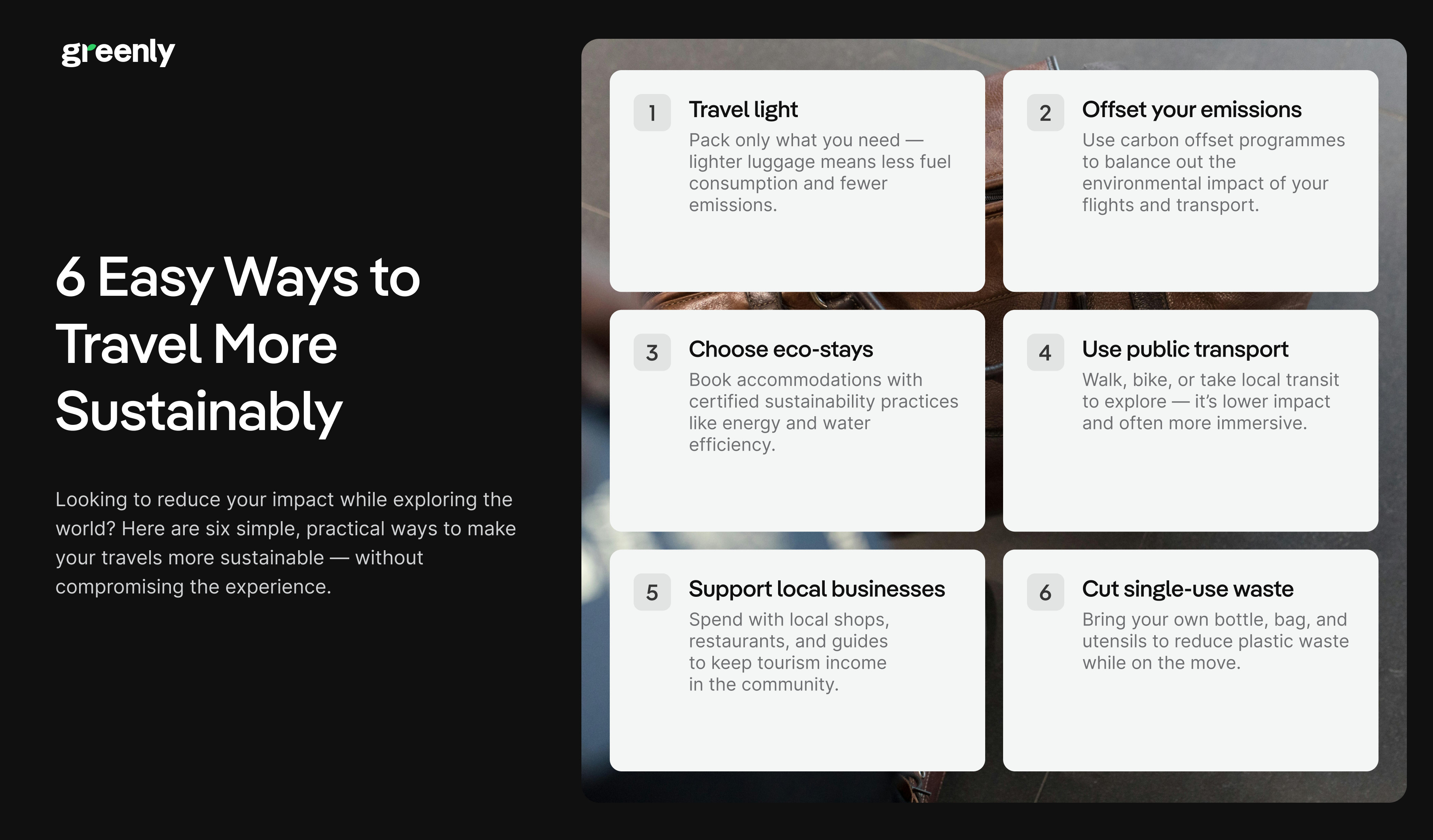 Tips for Sustainable Travel
Tips for Sustainable Travel
8. A Call To Action
The future of tourism hinges on the collective efforts of governments, businesses, communities, tourism professionals, and travelers.
Tourism companies must prioritize sustainability as a core operational principle rather than a mere marketing tactic. Policymakers should implement regulations that incentivize sustainable practices, such as carbon taxes on flights and stricter environmental standards for tourism operators, aligning the industry with the UN Sustainable Development Goals.
Local communities should be empowered to manage tourism in ways that benefit them economically while preserving their cultural and natural heritage. Travelers should adopt a mindset of responsibility, acknowledging the impact of their journeys and making choices that minimize environmental harm.
 Sustainable Tourism Solutions
Sustainable Tourism Solutions
9. How SIXT.VN Can Help You Travel Responsibly In Vietnam
Planning a trip to Vietnam? SIXT.VN is your partner for sustainable and responsible travel. We understand the concerns about tourism’s impact and offer services designed to minimize your environmental footprint while maximizing your experience.
- Eco-Friendly Transportation: Choose from our range of fuel-efficient vehicles for airport transfers and exploring Hanoi. We also offer options for hybrid and electric vehicles as they become more available in Vietnam.
- Carefully Selected Accommodations: We partner with hotels and accommodations that prioritize sustainability, ensuring your stay supports responsible tourism practices.
- Sustainable Tours: Discover Hanoi with our carefully curated tours that focus on cultural preservation and minimal environmental impact. Explore local markets, historical sites, and natural beauty spots with expert guides committed to responsible tourism.
- Support Local Communities: We work with local businesses and communities to ensure that your tourism spending directly benefits the people and places you visit.
Ready to explore Vietnam responsibly? Visit SIXT.VN today to book your eco-friendly transportation, sustainable accommodations, and ethical tours. Let us help you create a memorable and sustainable travel experience. Address: 260 Cau Giay, Hanoi, Vietnam. Hotline/Whatsapp: +84 986 244 358. Website: SIXT.VN.
10. How Greenly Can Help Your Company
Greenly offers comprehensive carbon management solutions to simplify the journey to net zero.
- Measurement of GHG Emissions: Track Scope 1, 2, and 3 emissions.
- Custom Action Plans: Develop tailored strategies with climate experts.
- Decarbonizing Your Supply Chain: Transition to low-carbon options.
- Intuitive Platform: Manage environmental impact and track ESG goals.
Partner with Greenly to reduce your environmental impact and lead in sustainability. Start your journey toward net zero with Greenly today and build a more sustainable future for your company.
 Greenly Platform
Greenly Platform
11. FAQ About Tourism and The Environment
11.1. How does tourism affect the environment?
Tourism can negatively impact the environment through pollution, habitat destruction, increased emissions, and strain on local resources.
11.2. What are the main sources of emissions from tourism?
The main sources include air travel, high energy consumption in accommodations, local transport, and cruise ships.
11.3. How can I reduce my environmental impact when traveling?
Choose eco-friendly accommodations, travel light, use public transport, support local businesses, and reduce waste.
11.4. What is eco-tourism?
Eco-tourism is responsible travel to natural areas that conserves the environment, sustains local communities, and involves education.
11.5. How can tourism contribute to conservation?
Tourism can generate revenue and awareness that helps fund conservation efforts and support local communities.
11.6. What is community-based tourism (CBT)?
CBT involves local communities directly in the tourism industry to ensure economic benefits are distributed fairly and cultural and environmental integrity is maintained.
11.7. How does climate change threaten the future of tourism?
Climate change causes rising sea levels, extreme weather events, and ecosystem collapse, endangering tourist destinations.
11.8. What is carbon offsetting?
Carbon offsetting involves investing in environmental projects that reduce greenhouse gases to compensate for emissions from travel.
11.9. What role do tourism companies play in sustainability?
Tourism companies should commit to sustainability as a core part of their operations, implementing green infrastructure and responsible practices.
11.10. How can governments promote sustainable tourism?
Governments can implement regulations that incentivize sustainable practices, such as carbon taxes and stricter environmental standards for tourism operators.



